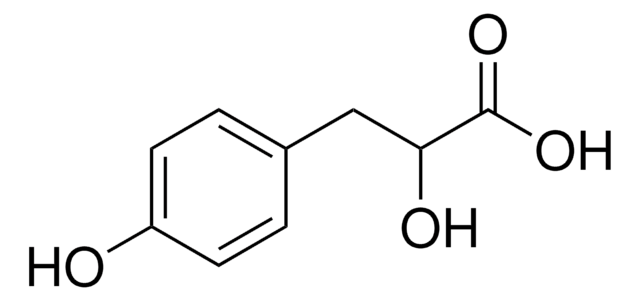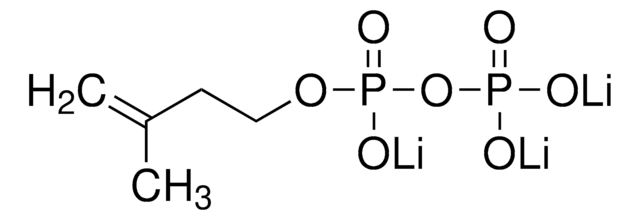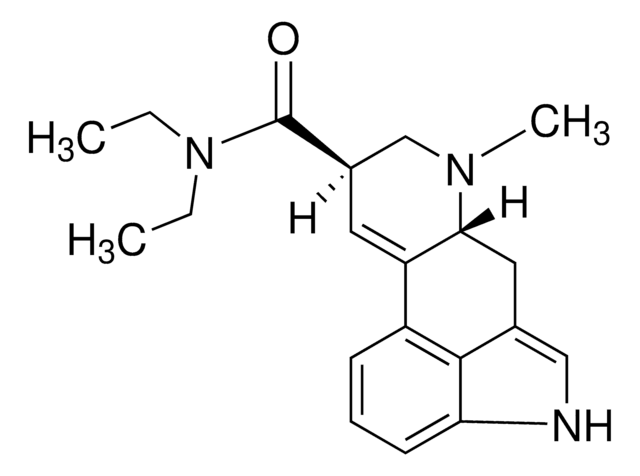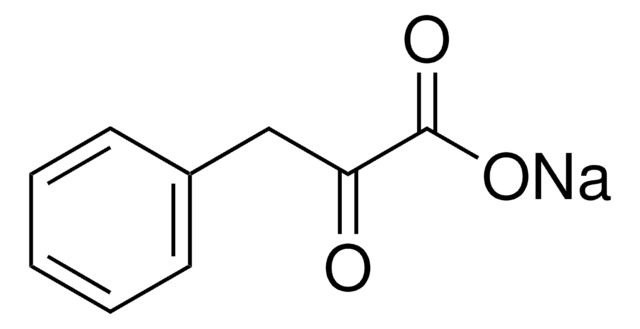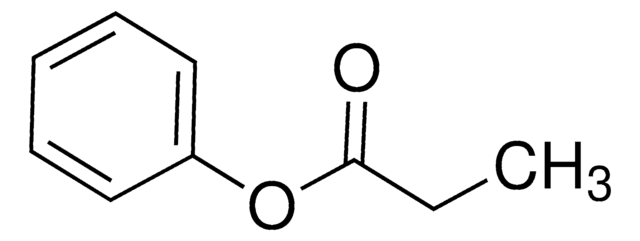P7251
3-Phenyllactic acid
≥98%
Sinónimos:
α-Hydroxyhydrocinnamic acid, β-Phenyllactic acid, 2-Hydroxy-3-phenylpropionic acid
Iniciar sesiónpara Ver la Fijación de precios por contrato y de la organización
About This Item
Fórmula lineal:
C6H5CH2CH(OH)COOH
Número de CAS:
Peso molecular:
166.17
Beilstein:
2209791
Número CE:
Número MDL:
Código UNSPSC:
12352100
ID de la sustancia en PubChem:
NACRES:
NA.22
Productos recomendados
Nivel de calidad
Análisis
≥98%
formulario
powder
cadena SMILES
OC(Cc1ccccc1)C(O)=O
InChI
1S/C9H10O3/c10-8(9(11)12)6-7-4-2-1-3-5-7/h1-5,8,10H,6H2,(H,11,12)
Clave InChI
VOXXWSYKYCBWHO-UHFFFAOYSA-N
¿Está buscando productos similares? Visita Guía de comparación de productos
Aplicación
3-Phenyllactic acid can be used as a reactant to prepare:
- O
- -Acetyl-3-phenyllactic acid by reacting with acetic anhydride in the presence of pyridine.
- Ethyl 2-oxo-1-(phenylmethyl)-2-[(phenylmethyl)amino]ethyl carbonate by one pot reaction with 2-ethoxy-1-(ethoxycarbonyl)-1,2-dihydroquinoline (EEDQ) and aniline.
- Phenylmethyl-1,3-dioxolane-2,4-dione by condensation reaction with trichloromethyl chloroformate (diphosgene) in the presence of activated charcoal.
Reagent involved in biological studies of:
- Enantioselectivity of lipase in transesterification
- Oxidation by glycolate oxidase and catalase
Aplicación
Referencia del producto
Descripción
Precios
Código de clase de almacenamiento
11 - Combustible Solids
Clase de riesgo para el agua (WGK)
WGK 3
Punto de inflamabilidad (°F)
Not applicable
Punto de inflamabilidad (°C)
Not applicable
Equipo de protección personal
Eyeshields, Gloves, type N95 (US)
Elija entre una de las versiones más recientes:
¿Ya tiene este producto?
Encuentre la documentación para los productos que ha comprado recientemente en la Biblioteca de documentos.
Los clientes también vieron
C N Sarkissian et al.
Analytical biochemistry, 280(2), 242-249 (2000-05-03)
Phenylketonuria (PKU) (OMIM 261600) is the first Mendelian disease to have an identified chemical cause of impaired cognitive development. The disease is accompanied by hyperphenylalaninemia (HPA) and elevated levels of phenylalanine metabolites (phenylacetate (PAA), phenyllactate (PLA), and phenylpyruvate (PPA)) in
Mattia Quattrini et al.
International journal of food microbiology, 302, 8-14 (2018-09-18)
Fungal spoilage of bread remains an unsolved issue in bread making. This work aims to identify alternative strategies to conventional preservatives in order to prevent or delay fungal spoilage of bread. The minimum inhibitory concentration (MIC) of bacterial metabolites and
S Iijima et al.
The Tohoku journal of experimental medicine, 117(2), 167-178 (1975-10-01)
Wister albino pregnant rats were fed on pellets containing 3.5% L-phenylalanine (Phe) from 10 days before the expected date of birth. The diet was then switched to 7% Phe pellets at the third week after birth. Baby rats were reared
Jessie Bong et al.
Food chemistry, 267, 355-367 (2018-06-24)
New Zealand manuka (Leptospermum scoparium) and kanuka (Kunzea ericoides) honeys contain a unique array of chemical markers useful for chemical fingerprinting. We investigated the presence of 13 potential marker compounds in nectars of the major honey crop species. We confirmed
Helena Lind et al.
FEMS microbiology letters, 271(2), 310-315 (2007-04-26)
Antifungal compounds from cultures of five type strains of dairy propionibacteria, as well as from the cultivation medium, were studied. Cell-free supernatants and medium were fractionated by C(18) solid phase extraction. The aqueous 95% acetonitrile fractions were analyzed by GC-MS
Chromatograms
application for HPLCNuestro equipo de científicos tiene experiencia en todas las áreas de investigación: Ciencias de la vida, Ciencia de los materiales, Síntesis química, Cromatografía, Analítica y muchas otras.
Póngase en contacto con el Servicio técnico
